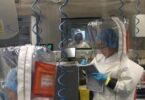(More Information On African Americans)
 Sossina M. Haile (born 1966) is an Ethiopian-American scientist. She is a Professor of Materials Science and of Chemical Engineering at the Caltech, who created a new type of fuel cell.
Sossina M. Haile (born 1966) is an Ethiopian-American scientist. She is a Professor of Materials Science and of Chemical Engineering at the Caltech, who created a new type of fuel cell.
Haile’s family fled Ethiopia during the coup in the mid-’70s, after soldiers arrested and nearly killed her historian father. They settled in rural Minnesota where she attended Saint John’s Preparatory School (Collegeville, MN), graduating in 1983. She received her B.S and Ph.D (1992) from the Massachusetts Institute of Technology, and M.S. from the University of California, Berkeley. Before joining the Caltech faculty in 1996, Haile spent three years as an assistant professor at the University of Washington, Seattle. Haile has received the NSF National Young Investigator Award (1994–99), Humboldt Fellowship (1992–93), Fulbright Fellowship (1991–92), and AT&T Cooperative Research Fellowship (1986–92). The Humboldt and Fulbright fellowships supported her research at the Max Planck Institut für Festkörperforschung [Institute for Solid State Research], Stuttgart, Germany (1991–1993). She is the recipient of the 2001 J.B. Wagner Award of the High Temperature Materials Division of the Electrochemical Society, the 2000 Coble Award from the American Ceramics Society and the 1997 TMS Robert Lansing Hardy Award.
Haile’s research centers on ionic conduction in solids, with the twin objectives of understanding the mechanisms that govern ion transport, and applying such an understanding to the development of advanced solid electrolytes and novel solid-state electrochemical devices. Technological applications of fast ion conductors include batteries, sensors, ion pumps and fuel cells. It is to this last area that Dr. Haile’s work is most closely tied.
Materials under investigation in Dr. Haile’s group include proton-conducting solid acid compounds, proton-conducting perovskites, mixed oxygen- and electron-conducting perovskites, oxygen-conducting oxides, and alkali-conducting silicates. The standard technique used in her group for the characterization of electrical properties is A.C. impedance spectroscopy. Because ionic conductivity is closely tied to the crystal structure of and structural transitions in the conducting solid, crystal growth, structure determination by X-ray and neutron diffraction, and thermal analysis are also important aspects of Dr. Haile’s research. Using these methods, her group has shown, for example, that a broad range of proton containing solids undergo a monoclinic to cubic transition that is accompanied by an increase in conductivity of several orders of magnitude. In another example, her group has demonstrated that Ba0.5Sr0.5Co0.8Fe0.2O3-d has exceptional activity as a cathode for ceria-based solid oxide fuel cells. Dr. Haile’s work in solid state ionics is supported by the National Science Foundation (NSF), the Army Research Office and the Department of Energy. In the past, support has also been provided by the Defense Advanced Research Projects Agency (DARPA), the Office of Naval Research, the California Energy Commission, the Powell Foundation and the Kirsch Foundation. Industrial support has been provided by General Motors, EPRI (formerly Electric Power Research Institute), HRL (formerly Hughes Research Labs) and Honeywell (formerly Allied Signal and now General Electric)
Click Here For More Information







